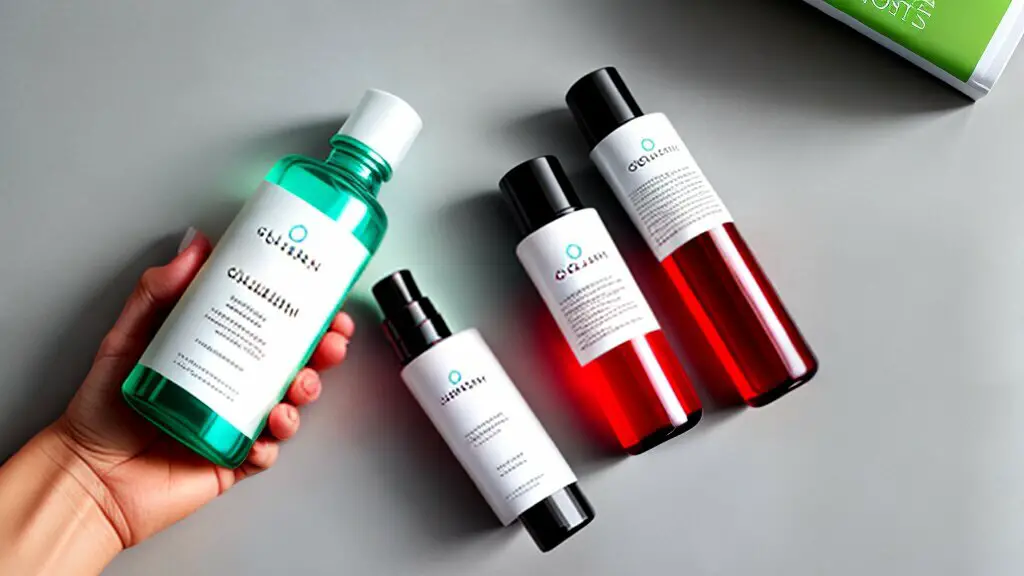What Does Collagen Serum Do? Unlocking the Benefits for Skin
Collagen serum has become one of the most popular skincare products on the market, touted for its ability revamp the health and appearance of your skin. But what exactly does collagen serum do, and how can it benefit your skin?
In this section, we will explore the benefits of collagen serum for your skin and how it can help you achieve a healthy, radiant complexion.
Key Takeaways
- Collagen serum can improve the overall health and appearance of your skin.
- Regular use of collagen serum can contribute to a healthy, radiant complexion.
- Collagen serum delivers its benefits to the skin through a mechanism of action.
Understanding the Difference: Serum vs. Plasma
When it comes to blood samples, you may have heard of serum and plasma. While they may seem similar, the two have some distinct differences. Understanding the visual characteristics of serum and plasma can help you better identify and use them appropriately in medical contexts.
What Are Serum and Plasma?
Serum and plasma are both the components of blood. Serum is the fluid part of the blood that remains after blood clots. It contains a variety of proteins, hormones, and electrolytes and is used in many diagnostic tests. Conversely, plasma is the liquid component of blood that remains when all the cells are removed. It’s rich in proteins and other molecules, including clotting factors, which help your blood coagulate when injured.
Visual Differences between Serum and Plasma
Visually, serum and plasma can look quite similar. Both are clear, yellowish liquids that can be separated from whole blood through centrifugation. However, some subtle differences can help you tell them apart.
| Serum | Plasma |
|---|---|
| Serum is yellow in color. | Plasma is light yellow in color. |
| Serum is free of cells, including red and white blood cells. | Plasma contains all the components of blood, including red and white blood cells, platelets, and clotting factors. |
| Serum is less viscous than plasma. | Plasma is more viscous due to its higher protein content. |
While these differences may seem minor, they can be crucial in medical contexts where the use of serum or plasma can impact the accuracy of diagnostic tests.
Visual Characteristics of Serum
When it comes to identifying serum, a few visual cues can help you distinguish it from other bodily fluids. First, the serum is a clear, yellowish liquid consistent with water. Unlike plasma, the serum contains no clotting factors, so it remains liquid even after blood has clotted.
In addition to its color and consistency, the serum is typically devoid of cells or cellular debris. This means that serum appears as a homogenous solution without any visible particulates when viewed under a microscope. However, it is essential to note that some biochemical assays may cause serum to appear slightly cloudy or opaque, even though it lacks cellular components.
Visual Characteristics of Plasma
Plasma is the fluid component present in the blood that suspends white and red blood cells and platelets. Unlike serum, plasma contains clotting factors that help the blood clot and stop bleeding. The visual appearance of plasma is a yellowish, straw-colored liquid slightly more opaque than serum.
When blood is drawn and allowed to sit undisturbed in a tube, plasma rises to the top due to its lighter weight. Unlike serum, plasma may have a faintly cloudy appearance due to fibrinogen, a protein essential in the clotting process.
Detecting Differences: Serum and Plasma Visual Clues
Some several visual cues and indicators can help you distinguish between serum and plasma. Here’s what to look for:
- Color: Serum is typically a clear, slightly yellowish liquid, while plasma is a pale, straw-colored liquid.
- Clotting: When left undisturbed, serum will clot and form a gel-like substance, while plasma will remain liquid.
- Fibrinogen: Serum does not contain fibrinogen, a protein that helps with blood clotting, while plasma does.
- Proteins: Serum contains a higher concentration of proteins than plasma, including albumin and globulins.
- Usage: Serum is commonly used in skincare products, while plasma is typically used in medical applications.
By paying attention to these visual clues, you can easily distinguish between serum and plasma and understand their unique properties.
Key Indicators to Differentiate Serum and Plasma
When distinguishing between serum and plasma, knowing what to look for is essential. Here are the critical visual cues and indicators that can help:
| Characteristic | Serum | Plasma |
|---|---|---|
| Color | Clear or pale yellow | Yellowish or straw-colored |
| Presence of Clotting Factors | Not present | Present |
| Presence of Fibrinogen | Not present | Present |
| Protein Content | Lower | Higher |
| Use in Medical Testing | Used for certain diagnostic tests | Used for blood transfusions and other medical procedures |
By using these indicators, you can confidently distinguish between serum and plasma. Keep in mind that more than visual cues alone may be required. Sometimes, laboratory testing may be necessary to obtain a definitive diagnosis.
Identifying Serum and Plasma Visually
Identifying serum and plasma visually may seem daunting at first, but several key indicators can help you differentiate between the two. Here are some practical tips to help you identify serum and plasma:
Color
Serum is typically yellowish, while plasma is a pale yellow or straw-like color. This color difference can help you distinguish between the two.
Clotting
The serum does not clot, while plasma does. This means that plasma will form a gel-like clot at the top of the tube when blood is left to rest, while serum will remain liquid.
Cell Content
Serum is free from cells, while plasma contains white and red blood cells. This difference can also aid in visually identifying serum and plasma.
By following these visual clues and indicators, you can confidently identify serum and plasma in the lab or clinic.
Benefits of Using Collagen Serum
Collagen serum is a powerful skincare product that offers numerous benefits for your skin. Whether you’re looking to reduce the appearance of fine lines and wrinkles, improve skin elasticity, or enhance your overall complexion, collagen serum can help. Here are some of the major benefits you can expect:
| Benefit | Description |
|---|---|
| Reduces the appearance of fine lines and wrinkles | The collagen in the serum helps plump up the skin, smoothing out lines and wrinkles for a more youthful appearance. |
| Improves skin elasticity | Collagen is a crucial component of healthy skin and helps maintain its elasticity. Regular use of collagen serum can help improve skin tone and firmness. |
| Enhances overall complexion | Collagen serum can help brighten dull skin and even out skin tone, resulting in a more radiant complexion. |
| Hydrates and moisturizes | Collagen serum is often formulated with other moisturizing ingredients that help nourish and hydrate the skin, leaving with the feeling soft and supple. |
Overall, using collagen serum as part of your daily skincare routine can help improve the health and look of your skin, leaving you with a more youthful, radiant complexion.
How Collagen Serum Works
Collagen serum is a popular skincare product that has gained much attention recently due to its ability to improve skin health and appearance. But how exactly does it work?
Collagen is a protein that is naturally made by the body and is responsible for sustaining skin elasticity and firmness. However, as we age, our body’s ability to make collagen decreases, which can lead to the look of fine lines and sagging skin.
Collagen serum delivers a concentrated dose of collagen to the skin, helping to support its natural production and improving its overall health and appearance. The serum is formulated with small molecules that can pierce deep into the skin, promoting the production of new collagen fibers.
In addition to boosting collagen production, collagen serum contains many other beneficial ingredients, like vitamins and antioxidants, that work together to provide additional benefits to the skin. For example, Vitamin C, an antioxidant, helps brighten the complexion and even skin tone.
Regular use of collagen serum can help to make better the skin texture, minimize the look of lines and wrinkles, and promote a healthy, radiant complexion.
Incorporating Collagen Serum into Your Skincare Routine
Now that you know the excellent benefits of collagen serum for your skin, you may wonder how to incorporate it into your daily routine.
The most effective way to use collagen serum is to apply it after cleansing and toning your face before moisturizing. This lets the serum to penetrate your skin and deliver its rejuvenating benefits.
Start using only a tiny amount, about a dime-sized drop, and gently massage it into your face and neck in upward circular motions. Wait a few minutes for the serum to fully soak before applying your moisturizer.
You should use the serum only at night if you have oily skin. For dry skin, you can use it twice a day for optimal results.
Always wear a sunscreen during the day to save your skin from the damages of the harmful UV rays, and maintain a healthy skincare routine by cleansing, toning, and moisturizing daily.
A Healthy, Radiant Complexion with Collagen Serum
Collagen serum is a powerful addition to any skincare routine, offering a range of benefits for your skin. From improving elasticity to reducing wrinkles and fine lines, this serum can help you achieve a glowing complexion.
Regular use of collagen serum can help increase skin hydration and improve skin texture, resulting in a smoother and more even complexion. Additionally, it can help to minimize the look of dark spots and hyperpigmentation, giving you a more radiant and youthful-looking complexion.
Collagen serum is also effective at promoting collagen making in the skin, which will help to secure and reduce signs of aging. This is especially important as we age, when the body’s natural collagen production decreases, leading visible signs of aging.
Whether you want to address certain skin concerns or want to maintain a healthy, radiant complexion, incorporating collagen serum into your skincare routine can make a noticeable difference. Regular use lets you enjoy the benefits of this potent serum and achieve your best skin yet.
Conclusion
In conclusion, collagen serum is a powerful skincare product that can help rejuvenate and revitalize your skin. By incorporating collagen serum into your daily skincare routine, you can get numerous benefits, such as improved skin elasticity, minimized fine lines and wrinkles, and a more youthful, radiant complexion.
In this article, we explored the characteristics of both serum and plasma and provided a comprehensive guide on visually differentiating between the two. We also delved into the benefits of using collagen serum and explained how it delivers them to your skin.
By following these practical tips in this article, you can easily include collagen serum into your daily skincare routine and enjoy other benefits. So, say goodbye to lifeless dull skin and hello to a healthy, radiant complexion with collagen serum!

I’m Carol Edwards, the force behind SerumDeals.com – your one-stop for all things serum. With over a decade of obsessing over skincare, I’m here to demystify sensational skin. I dig deep, testing serums in action. Beyond the surface, I uncover actual effectiveness. From ingredient breakdowns to real-life testing, my reviews are your trustworthy guide. Whether you’re a skincare rookie or diving into specifics like anti-aging or hydration, I’ve got your back with accurate info. Let’s simplify the serum journey together. SerumDeals.com isn’t just a site; it’s a hub for thriving skincare aficionados. Join me to uncover vibrant skin, one serum at a time.
Glowingly, Carol Edwards






